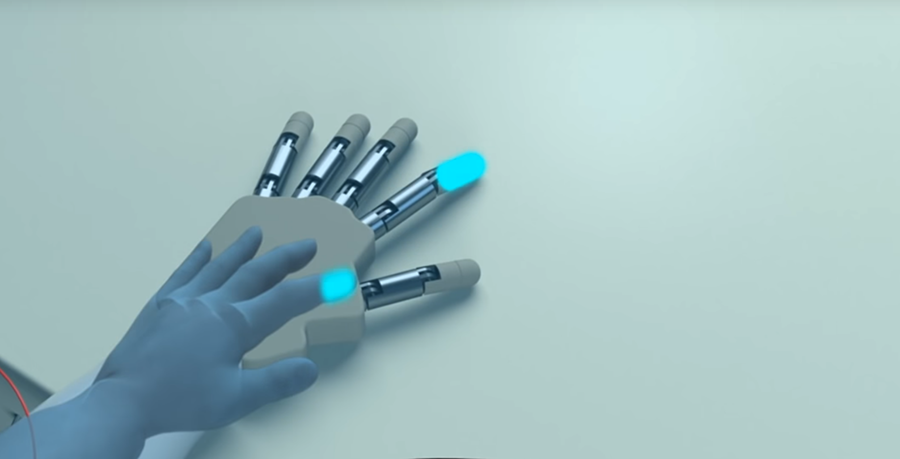For amputees, who use prostheses, one of the biggest challenges is getting over the feeling that their prosthetic is not part of their body. Yes, the prosthetic is not part of the body, but it’s essential for the amputee to imagine it is if they want to achieve the best results. One specific problem is that amputees can often ‘feel’ their missing limb; or at least, a distorted version of it.
Read more Electronic Skin for Prosthetic Hands Lets Amputees Feel Pain
With that in mind, researchers at the Ecole Polytechnique Federale de Lausanne in Switzerland, have developed a technique that involves virtual reality (VR) and neural stimulation to help change an amputee’s “phantom limb” to more closely match their prosthetic limb, making it easier and more natural to use, reports MedGadget.
Amputees frequently experience sensations from their “phantom limbs,” which they perceive to be much smaller than the original limb. Prosthetic limbs available in the market do not typically offer experiences of sensation and touch, and they’re also the same size as the original limb, which leads to a discrepancy between what an amputee feels (i.e. their small phantom limb) and the reality of using a larger prosthetic limb. This feeling of clumsiness may limit how often amputees use their prostheses.
To fix this issue, the researchers set out to alter an amputee’s perception of their prosthetic, so that it feels more like their own limb.
The researchers gave amputees virtual reality headsets through which they are able to view a virtual prosthetic limb. When they applied a stimulus to a nerve in the amputee’s stump, it created the illusion that a digit in the amputees’ phantom limb (in this case the index finger) was experiencing a sensation. At the same time, the index finger in the virtual prosthetic glowed, which helped to create the illusion that the phantom limb and the prosthetic are one and the same.
“The brain regularly uses its senses to evaluate what belongs to the body and what is external to the body,” said Giulio Rognini of EPFL. “We showed exactly how vision and touch can be combined to trick the amputee’s brain into feeling what it sees, inducing embodiment of the prosthetic hand with an additional effect that the phantom limb grows into the prosthetic one.”
Read more Ultra-Sensitive Electronic Skin Can Feel Touch and Temperature Changes
The simulation made amputees feel that their phantom limb grew to become the larger prosthetic. The effect lasted for about 10 minutes after the completion of the simulation, but the researchers hope that it could provide a longer term or even permanent treatment in the future. They also wish to examine if the simulation can have therapeutic effects on the phantom pain experienced by amputees.
“The setup is portable and could one day be turned into a therapy to help patients embody their prosthetic limb permanently,” Rognini said.













